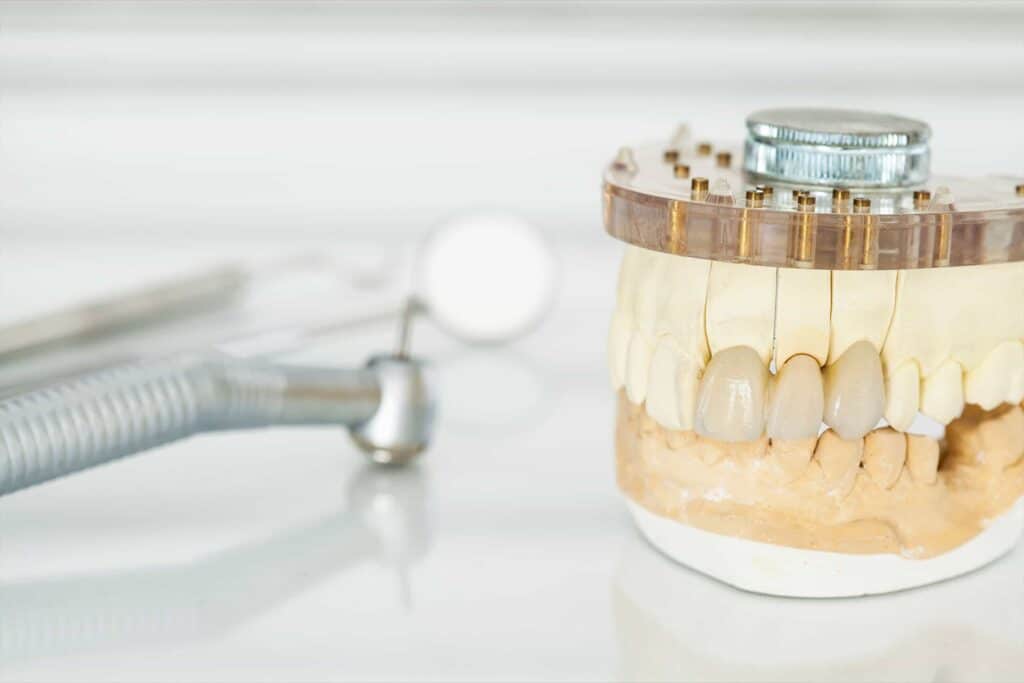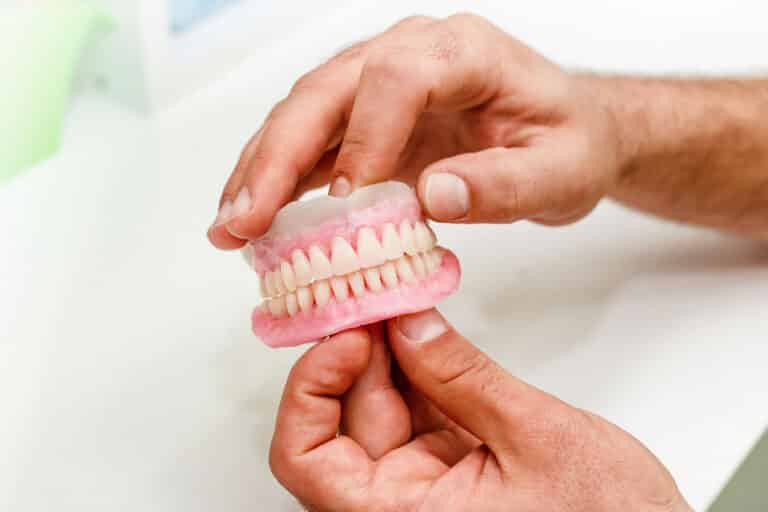Tooth decay, also known as cavities, is one of the most common diseases among humans. Chances are you or someone you know has had a cavity. These cavities can be big or small and depending on the size, your dentist will recommend different treatments.
Many cavities are painless, but still need to be addressed before it gets too close to the nerve. Once the decay get too close to the nerve, it can be sensitive and painful. Unfortunately cavities don’t go away a dentist can remove the damaged, rotten tooth structure.
There are some people who are more prone to cavities, making many wonder why they get so many cavities. There are many factors that come into play including oral hygiene, diet, oral health, and proper dental care.
What Is a Cavity?
The technical term for a cavity is dental decay or caries, which is when the bacteria in your mouth contributes to an acidic environment that erodes and rots away your teeth. Over time, accumulated acid erosion creates a hole in the tooth’s surface through the enamel.
The enamel is the outer layer of all teeth and is very tough and mineralized. The enamel works to help keep bacteria away from the inner portion of the tooth because it is more resistant to cavities than the inner layer of teeth, called dentin. Once the cavities reach the dentin, it will rapidly spread regardless of any degree or frequency of home care.
It takes a while for acid to break down and erode the enamel, but once rotted away, even proper oral hygiene won’t stop the cavity from getting bigger. Cavities enlarge over time, traveling outwards from the point of origin, often towards the center of the tooth, rotting away as it spreads and will eventually reach the nerve or jaw bone.
What Causes Cavities?
The main cause of cavities is from accumulated acid erosion, which mostly comes from bacteria. There are many factors that contribute to how susceptible someone is to getting cavities. Keep in mind anyone with natural teeth can develop cavities and they can form under crowns, fillings, and bridges. Some people may be more prone to them than others.
How Does Diet Affect Tooth Decay?
Diet plays a large role in how many cavities you get. As a general rule of thumb, eating more processed food or drink, especially sugar and acidic drinks, increases your cavity rate. For instance, eating a lot of chips and energy drinks feeds the oral bacteria which increases the plaque and acid attacks on teeth.
It is difficult to fully remove sugar, soda, and processed foods but do the best job you can at reducing your intake. When possible, take care of your teeth after eating these foods.
How Does Eating Frequently Affect Tooth Decay?
How often you eat also plays a role in how often you get cavities. Frequently snacking throughout the day creates an acidic oral environment. It takes up to 30 minutes after eating for the pH to normalize. So the more frequent you eat, the more the bacteria in the mouth can produce acids and increase the amount of cavities you get.
Snacking less frequently and/or eating less processed food along with some oral hygiene after eating can help reduce the amount of cavities you get. While full on brushing and flossing is the gold standard, at the very least removing stuck food particles can help.
How Do Oral Hygiene Habits Affect Tooth Decay?
Perhaps the best known factor, keeping your teeth clean with proper oral hygiene will reduce the amount of tooth decay you get. Brush your teeth twice a day with proper toothpaste and floss at least once nightly is the minimum to keep your teeth clean.
Most dentists recommend toothpaste that contains fluoride, which is known to strengthen enamel and fight acid erosion. Good oral care is critical to reducing tooth decay.
How Do Genetics Affect Tooth Decay?
Hereditary factors also play a role in how frequent you get cavities. There are a few theories that believe that a combination of the composition of oral bacteria and saliva may play a role. Until this is well established, aim to improve the things that are well within your control.
Those with poor dental habits, including those with poor manual dexterity, and those who do not get dental cleanings often are at a higher risk of cavities. While dental cleanings target periodontal disease, cavity prevention is a secondary and indirect benefit of them.
Three common steps occur as cavities develop:
Step 1: Plaque Development
Plaque is an opaque white material that is a byproduct of bacterial metabolism that coats the surface of the teeth. It builds up from eating, especially foods rich in starch and sugars. After high accumulation of plaque, not cleaning the teeth properly to remove plaque will lead to cavities. Bacteria metabolize the food particles and produce plaque as a byproduct.
If plaque remains on the tooth and isn’t removed, it will mineralize and harden. This may occur above or under the gum line. As it hardens, it becomes calculus, also called tartar, on the tooth’s surface. Calculus is even more difficult to remove and must be done professionally. Improper cleaning can burnish the calculus and make it more difficult to remove. Once in place, it creates a rough surface for more bacteria to attach and grow in.
Step 2: Plaque Attacks
As plaque grows, it degrades the minerals on the tooth’s surface – the enamel. That decalcification erodes away the enamel, allowing bacteria to penetrate through the tooth. A hole eventually will form in the enamel, much like acid melting through a floor like in the movies.
As the enamel degrades further and holes become larger, the bacteria and acids move further into the next layer of the tooth, the dentin. Although still very tough, the dentin is less mineralized than the enamel. That makes it more vulnerable and less resistant to acid. Once bacteria have eroded into the dentin, it will quickly spread.
Step 3: Damage Worsens
As long as the bacteria remains, it penetrates deeper into the tooth. Finally, the cavity invades into the inner tooth material, called the pulp. This pulp is where the tooth’s nerves and blood vessels are. When this happens, pain typically increases as the tooth becomes very sensitive.
This results in the pulp swelling becoming inflamed. When the nerve tissue becomes inflamed, it expands. Unfortunately the tissue is expanding in a rigid container, the tooth, which results in intense pain and sensitivity. Given enough time, the nerve eventually dies and stops hurting and leads to a dental abscess.
Are Cavities Genetic?
There are some thoughts that genetics play a role in who is more susceptible to cavities, meaning if there is a family history of rampant tooth decay, you may be more prone to them as well. Most of the time, environmental factors play the largest role in why some people develop cavities more commonly than others.
What Does a Cavity Look Like?
Cavity appearances range greatly, however they usually are a combination of dark sports with a frosty white. Sometimes there is a visible hole in the tooth, sometimes there isn’t. Cavities can occur on any area of the tooth, but most often occur in hard to clean areas.
These areas include the biting surface, which has a lot of grooves. This area is common for children to get decay, however between teeth is also an extremely common area to get caries as well. On top of this, these areas have less saliva contact, which normally washes away food particles.
A visual exam by a qualified dentist in conjunction with x-rays are required to diagnose cavities. Sometimes there are things that may look like a cavity but actually aren’t.
What Does a Cavity Feel Like?
Initially, cavity symptoms are typically asymptomatic. Pain and sensitivity does not occur until cavities get deep enough. This is because at first cavities are far away from the nerve.
Once the cavity gets close enough to the nerve, symptoms start to occur. Many people feel various symptoms, including:
- Discomfort when drinking
- Sensitivity to hot and cold
- Toothaches that seem to center around one tooth
- Sensitivity to sweet foods
- Pain when biting down
- Bad taste in the mouth
- Bad breath that doesn’t go away with brushing
How Do I Get Rid of Cavities?
Good dental hygiene and proper diet will help to slow the progression of cavity development and in many cases prevent them from forming in the first place. However any dental decay that has reached the dentin is likely to get worse over time even proper brushing and flossing and eating habits.
Rather, if a person has cavities, it’s essential to seek out professional dental treatment as soon as possible. The sooner treatment is applied, the less damage is done to the tooth itself. It’s also cheaper to treat decay when it’s smaller. A root canal and crown is more expensive than a filling.
Dentists can provide several treatment options for a tooth cavity. The most common treatment is the application of a filling. Dentists first need to remove the decayed tooth tissue and clean the bacteria out of the area. Then, to restore proper function, the hole is filled with a filling material that’s very durable. This helps to stop the progression of the condition, according to the National Institute of Dental and Craniofacial Research.
If a person doesn’t seek out care, the erosion continues until it reaches critical structures such as the nerve or jaw bone. If enough of the tooth has rotted away, there won’t be enough tooth remaining to fix and it will have to be removed.
The best approach to proper oral health is to prevent cavities in the first place. However if you already have decay, speak to your dentist to first get rid of the decay. Once your oral health is in good standing, then you can adjust your habits to stop getting cavities.
How Can I Stop Getting So Many Cavities?
The best and fastest way to prevent cavities is to improve dental hygiene and dietary habits. That includes reducing or avoiding processed foods and sugary drinks. When possible, brush and/or floss about 30 minutes after eating. If you frequently eat snacks, reducing the number of snacks you eat. The more frequently a person snacks, the more likely cavities develop.
Of course, brushing and flossing twice a day with a fluoride toothpaste helps too. Infrequent brushing and flossing is just like showering once a week – things get dirty and start to smell. A mouth rinse may also help in reducing the bacteria inside the mouth and around the gums.
If you have dry mouth, also known as xerostomia, it will be much tougher to maintain ideal oral health. Saliva is critical in keeping healthy teeth and dry mouth is awful for ideal dental care. Dry mouth is unfortunately very common as it is one of the most common side effects from all medications. There are some over the counter products that may help. Ultimately those with dry mouth need to be extra vigilant about keeping their teeth clean.
Additionally, it’s important to come in to see a dentist at least one time every six months for a cleaning and checkup. A professional cleaning helps to remove the plaque and tartar from the exterior of the tooth.
Quitting smoking will also improve your oral health. While more investigation about the effects of marijuana and vaping needs to be done, it is safe to assume they do more harm than good to your gum health and to your teeth.
Was this post helpful?
Table of Contents
- What Is a Cavity?
- What Causes Cavities?
- How Does Diet Affect Tooth Decay?
- How Does Eating Frequently Affect Tooth Decay?
- How Do Oral Hygiene Habits Affect Tooth Decay?
- How Do Genetics Affect Tooth Decay?
- Are Cavities Genetic?
- What Does a Cavity Look Like?
- What Does a Cavity Feel Like?
- How Do I Get Rid of Cavities?
- How Can I Stop Getting So Many Cavities?





